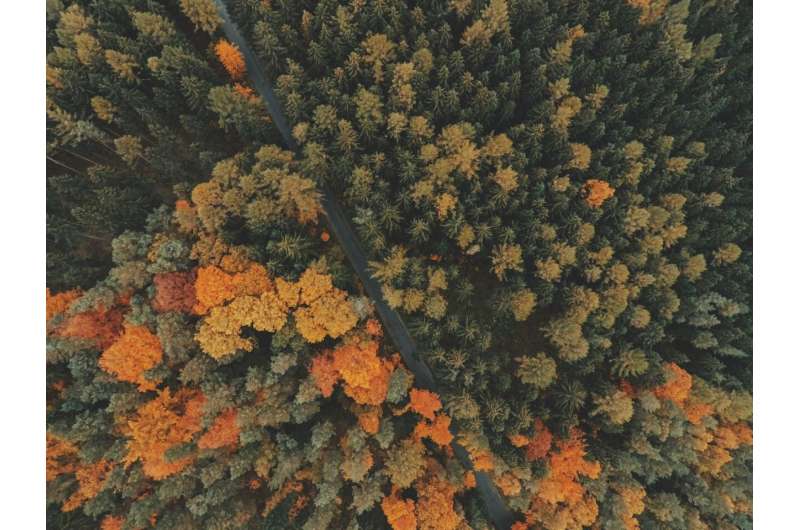As autumn arrives, the forests of northeastern North America transform into a breathtaking display of reds, yellows, and golds. But why do some trees shed their leaves while others remain evergreen? This article explores the ecological significance of this trait, delving into the carbon economy of plants and the trade-offs that shape the coexistence of deciduous and evergreen species. Learn how these strategies have evolved to thrive in different environments, from the tropics to the boreal forest. Deciduous and evergreen trees are the two extremes of the leaf economic spectrum, each with its own advantages and disadvantages.

The Carbon Economy of Leaves
All trees, whether deciduous or evergreen, rely on leaves to capture carbon dioxide (CO2) from the atmosphere through photosynthesis. This carbon is essential for growth and reproduction, making leaves a crucial component of plant survival. However, the cost of building leaves varies widely depending on their type. Thick, needle-shaped leaves, such as those found on conifers, are more expensive to construct than the thin, flat leaves of deciduous trees like maples.
This carbon economy paradigm suggests that thick leaves must live longer to ‘pay back’ the initial investment, while thinner leaves can capture enough carbon during the growing season to justify their lower construction cost. The trade-off is that thinner leaves are more vulnerable to damage from herbivores, frost, drought, and wind, while thicker, more durable leaves are better protected but require more carbon to produce.
Evergreen vs. Deciduous: Two Strategies for Survival
The distribution of evergreen and deciduous species across the globe can be explained by the success of these two strategies in different environmental conditions. In environments where resources like sunlight, water, and nutrients are plentiful, deciduous species generally outcompete evergreen species. Building thin leaves offers the advantage of creating a larger surface area for a given amount of biomass, which can collect a larger amount of solar energy necessary for carbon absorption. In these conditions, deciduous trees thrive, growing quickly and shedding their leaves once the growing season ends.
In harsher environments, where nutrients are scarce and the growing season is short, being evergreen provides several advantages. Shedding leaves every year is costly in both carbon and nutrients, and keeping leaves longer reduces annual nutrient losses to the soil and increases the mean residence time of these nutrients in the plant. Additionally, evergreens can capture carbon early in the spring as soon as conditions are favorable, while deciduous trees need time to grow new leaves.
The Coexistence of Evergreen and Deciduous Strategies
While the carbon economy of plants can alone explain the dominance of evergreens in both the equatorial and the boreal zones, evergreens and deciduous often coexist in various ecosystems because both strategies are efficient enough to ensure the survival of the populations.
In ecology, the composition of plant communities is shaped by a multitude of known and hidden variables interacting with one another, making it a challenging task to explain or predict their composition. The trade-offs between the evergreen and deciduous strategies, as well as the diverse environmental conditions, contribute to the coexistence of these two leaf habits, each with its own advantages and adaptations to their respective habitats.
